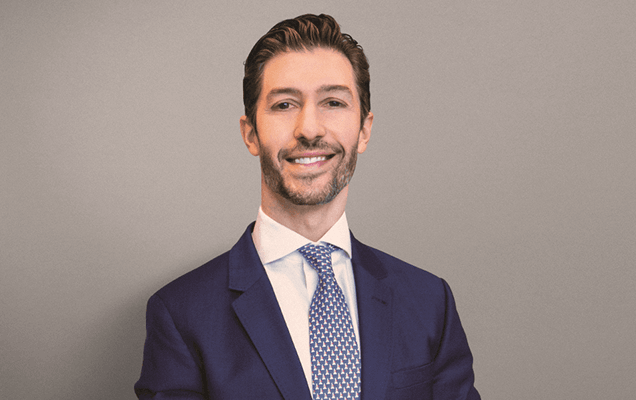Clival tumors are rare tumors that arise in the clivus, a portion of bone at the base of the skull between the occipital and sphenoid bones. This area is surrounded by essential structures and nerves of the brainstem and important arteries, such as the internal carotid arteries. Clival tumors can affect the function of all these systems, leading to a variety of symptoms. Clival tumors can be benign or malignant, and treatment options include surgical procedures and radiotherapy to remove or reduce the tumor.
What Are Clival Tumors?
Clival tumors can be classified as either chordomas or chondrosarcomas. Although both types of tumors arise in the clival area of the brain, they have different origins and behaviors.
Chordomas
Clival chordomas are generally benign and slow-growing, but as they develop they can cause significant damage to surrounding areas of the brain due to pressure and mass effect. Chordomas arise from cells of the notochord, an embryonic precursor to the spine that develops in the fetus at around three weeks. As the spine develops, the notochord cells become part of the intervertebral discs in the back. However, in rare cases, these notochord remnants can become enclosed in bone and begin to grow, destroying local tissues and even spreading to other areas of the body.
Chondrosarcomas
Chordomas are rare, but chondrosarcomas are even rarer. The origin of this kind of clival tumor is unclear, but it arises in cartilage in the skull, which is replaced by bone as the body develops. Chondrosarcomas tend to be slow-growing, but they can become aggressive and affect nearby tissues and structures in the brain. They can also metastasize, or spread to other parts of the body.
Clival Tumor Symptoms
Symptoms of both chordomas and chondrosarcomas can vary, depending on their location and the surrounding areas of the brain that they affect. Because clival tumors can affect the brainstem, internal carotid arteries and neural pathways at the base of the skull, symptoms can include the following:
- Headaches
- Vision problems
- Coordination problems
- Neck pain
- Facial pain, numbness or paralysis
- Speech problems
- Swallowing difficulty
- Dizziness and vertigo
- Hearing difficulty
Symptoms may not appear until the tumor is relatively large, and those symptoms can sometimes be attributed to other factors and conditions, which can delay diagnosis and treatment.
We are more than surgeons,
we are your support system.
What Causes Clival Tumors?
Although the causes of both chordomas and chondrosarcomas are known, it isn’t entirely clear what causes these rare tumors to develop, and who may be at risk. People of any age can develop a clival tumor, but men appear to develop clival tumors more frequently than women. People of European ancestry are more likely to develop these kinds of tumors than those of other ethnicities.
Unlike some other kinds of tumors, no known environmental or lifestyle factors contribute to developing clival tumors. However, genetic factors may play a role because in some cases, multiple members of a family can develop clival tumors. Nearly all individuals who develop chordomas appear to share a specific genetic trait – a single letter variation in a gene called brachyury that plays a critical role in the development of the notochord. Chordomas also occur at a higher rate in children affected by a genetic disorder called Tuberous Sclerosis Complex.
How Are Clival Tumors Diagnosed?
Because clival tumors tend to be slow growing, they may not be diagnosed until they become large enough to cause symptoms, but the symptoms they cause are similar to those of many other neurological conditions. Diagnosing these types of tumors begins with a neurological examination that evaluates functions such as eye movement, coordination, balance and sensations such as touch and taste. Detailed imaging with Magnetic Resonance Imaging (MRI) or Computed Tomography, or CT scans can also be used to distinguish a clival tumor from other types of skull tumors. A biopsy may also be needed to definitively diagnose and type the clival tumor as a chordoma or chondrosarcoma.
Treating Clival Tumors
Treatment of a clival tumor depends on factors including the size and location of the tumor, and the patient’s age and overall health. The primary treatment for both kinds of clival tumors is surgery to remove the tumor completely, or at least partially. Neurosurgeons may perform either a craniotomy, which involves removing a portion of the skull to access the tumor or a transsphenoidal endoscopic surgery, a procedure which accesses the tumor through the nasal cavity. This relatively new procedure is less invasive, does not require a craniotomy, and allows patients to recover more quickly.
Radiation therapy also plays an important role in treating clival tumors. When a tumor is difficult to access or it can be only partially removed, Gamma Knife Radiosurgery or proton beam radiotherapy may be used. This approach allows neurosurgeons to deliver highly targeted radiation to the tumor without damaging adjacent tissues. Standard chemotherapy regimens are typically not used for treating clival tumors.
After treatment and recovery, patients typically receive regular follow-ups with MRI or CT scanning, since clival tumors of both types frequently recur, either at the original site or in other parts of the body. Depending on circumstances, recurrences can be treated with further surgery, radiation therapy, or both.
Clival chordoma and chondrosarcoma affect about one person in a million, and they can occur at any age. However, a range of treatment options can relieve symptoms and help people with these very rare tumors get back to everyday life.

About Dr. Paul R. Gigante
Dr. Paul Gigante is an accomplished neurosurgeon in Central Jersey and a proud member of Neurosurgeons of New Jersey, practicing out of their Livingston office located conveniently on South Orange Avenue. He is recognized as a leading spine surgeon for both minimally invasive and complex procedures. Dr. Gigante is a graduate of Harvard Medical School and completed his fellowship at Stanford University in functional neurosurgery. His specialties are deep brain stimulation for Parkinson’s Disease and other nervous system disorders, spinal cord stimulation for chronic pain disorders, and surgical treatments for chronic nerve pain conditions. He also specializes in brain tumor surgeries. Dr. Paul Gigante is currently accepting new patients.
Recent Posts:






